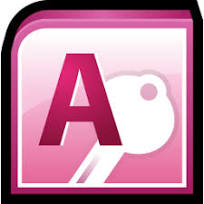Introduction To Microsoft Access
OVERVIEW:
Microsoft Access is one of the most popular and powerful DBMS. It has many built in features to assist you in constructing database and viewing information. MS-Access is much more involved and is a more genuine DBMS than other programs such as Microsoft Works. Microsoft Access is a Relational Database Management System (RDBMS) that you can use to store and manipulate large amount of information. It is easy to understand and its graphical interface helps to create queries, forms, and reports. In other words, even inexperienced programmers can use Access to turn a stack of invoices database that makes entering, updating, and reporting information as easy as clicking a button.

MS-Access offers more than just pretty interface for learning how to manage data. You'll find following benefits and more from using Access:
When you start up MS-Access, you get a dialog box asking if you want to open an existing database or create a new one.
MS-Access offers more than just pretty interface for learning how to manage data. You'll find following benefits and more from using Access:
- Sample database: It includes sample database applications to assist you learn about real-world tables, forms, queries, and reports, and how they are interconnected to from a database management system.
- Wizard: It makes very easy to create a database. You can choose from several examples of database in the Database Wizard for such storage uses as contact information, inventory control, a ledger, and so on. You can create and then modify these database to meet your own needs.
- Keys to understand the structure: After you have decided how to create and relate tables, you can easily view all the relationships in the database with the graphical interface in the Relationship Window. This makes one of the toughest parts of relational database design much easier and more manageable.
- Microsoft Office integration: You can use access with Word, Excel, and other office application to create mail merges, charts, and other helpful uses for your data.
- Easier programming: You can use relatively simple code with macros to automate repeated tasks, or you can try more complex and flexible code with VBA. Access provides graphical shortcuts and hints to help writing easier code.
- Common Standard: It uses standards that help applications scale up to work within larger environments. Access uses objects and SQL (Structure Query Language) to make its code from the adaptable to other applications.
- Redundancy: MS-Access allows you to store, retrieve, sort, analyze, and print information contained in the database. Data may be manipulated without data redundancy by defining relationships between sets of data. Databases are often used for product data. Redundancy means duplication of data in multiple files. It wastes the storage media of computer.
Creating New Database:
Once Access has been accessed, choose the File New database command from the menu at the top of the screen in order to create a new database. The database window is displayed. Choose the appropriate directory and drive. Then enter an eight-character name for the new database file and click "OK".When you start up MS-Access, you get a dialog box asking if you want to open an existing database or create a new one.
- Create a New Database.
- Create a File New Database using wizard
- Open an existing database.
Create a database using the Database Wizard
The Database Wizard guides you through process of the creation a database; it includes choosing a database template, selecting fields, making customization, adding pictures, and the database.
- When Microsoft Access first starts up, a dialog box is displayed with options to create a new database or to open an existing one. When this dialog box appears, select Access Database Wizards, pages, and projects and then click OK. Microsoft Access starts up, when you click the New Database on the toolbar.
Comments
Post a Comment